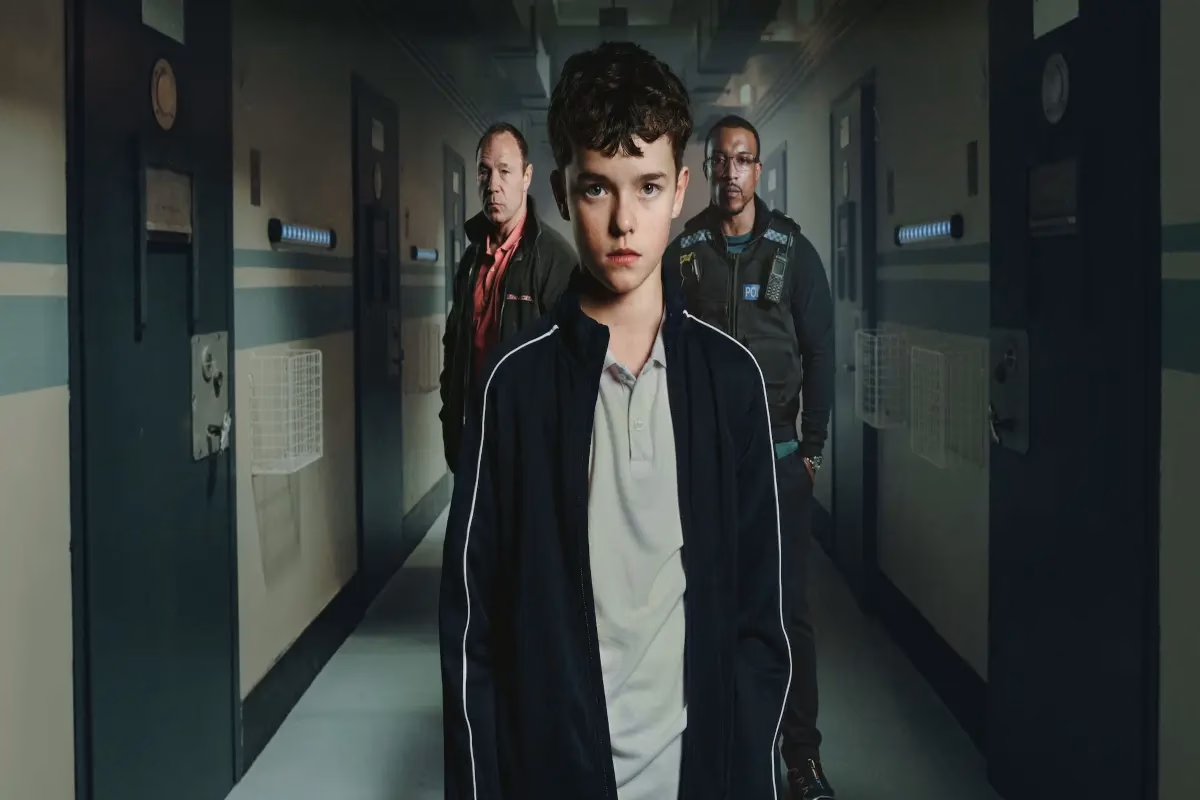Adolescence opens with a quiet thrum of tension. One unbroken shot follows a 13-year-old boy through his house, down a narrow hallway, and into the glow of his phone screen. The camera never cuts. By the end of that first episode, the series has pulled you fully inside his world. That approach has made the Netflix miniseries the standout of this Emmy season.
With the 77th Primetime Emmy Awards approaching on September 14, it has earned 13 nominations, including Outstanding Limited or Anthology Series, plus acting nods for Stephen Graham, Owen Cooper, Erin Doherty, Christine Tremarco, Ashley Walters, and recognition for Philip Barantini’s direction and Jack Thorne’s writing. Netflix has described it as one of their boldest projects so far. Indeed, Adolescence has quickly become a cultural reference point.
A Clear Portrait of the World Shaping Gen Z
In recent years, conversations about youth mental health have converged with growing concern about misogynistic influencers, algorithmic radicalisation, and adolescent violence. Adolescence places these forces in everyday settings, bedrooms, school corridors, and kitchens, and shows how they collide.
The series begins when 13-year-old Jamie is arrested for murdering a classmate, then traces the systems surrounding him: fractured families, peer dynamics, and online echo chambers where shame and loneliness harden into anger. The Guardian described it as “powerful TV that could save lives.”
It portrays how boys can be swept into toxic communities through boredom or isolation, how girls carry invisible emotional labour, and how parents struggle to guide children through digital spaces they can barely see. Every scene lands with the clarity of something observed up close.
Adolescence Is a Creative Gamble That Sharpens the Tension
Each episode unfolds in a single continuous take. The absence of cuts builds unrelenting tension, turning ordinary moments into high-stakes emotional terrain. Viewers stay inside the same pressure cooker as the characters, which gives the show its striking realism.

The cast carries that weight with precision. Owen Cooper gives Jamie a mix of fragility and defiance. Stephen Graham plays his father with controlled volatility, and Erin Doherty’s school psychologist brings a quiet, steady centre to the chaos. Christine Tremarco and Ashley Walters add textured performances that resist simplification.
The Guardian called the ensemble “utterly lived-in,” and their work grounds the series completely. The production design reinforces this tension. Rooms feel slightly too small, corridors stretch just long enough to feel watchful, and every space carries emotional residue. It creates a world that feels immediate and lived in rather than staged.
The Cultural Impact is Already Unfolding
Adolescence has ignited discussion far beyond entertainment circles. In the UK, France, the Netherlands, and Flanders in Belgium, education ministries and schools are rolling out resources and class sessions built around the series to explore toxic masculinity, online influence, violence, and youth mental health. The UK has made the show available to all secondary schools through Into Film+.
At the same time, France’s Education Ministry has created five classroom modules using selected scenes. Dutch and Flemish schools are introducing it with teaching materials developed by media literacy organisations. These initiatives, reported by outlets like Brussels Times and Euronews, demonstrate how the series is already being introduced into classrooms and youth organizations across Europe.
Audiences have responded just as strongly. Social media threads are full of viewers recognising pieces of their own adolescence in Jamie’s fear, confusion, and search for identity. That resonance has helped the show cross from prestige drama into a cultural event.
Adolescence Signals a New Era for Prestige TV
An Emmy sweep for Adolescence could signal a shift in prestige television. Its success shows there is space for series that combine formal experimentation with social depth, and that audiences are ready to engage with stories rooted in psychological realism. Even its nomination streak has already reshaped this year’s awards conversation.

It has expanded the definition of what a limited series can achieve, transitioning from entertainment to social commentary without compromising narrative drive. That recalibration matters, and the industry is paying attention.
Adolescence captures the realities shaping teenagers today with precision and emotional weight. It is tense, technically daring, and culturally attuned. Whether it wins or not, it has already changed what this year’s Emmy race represents. Television often mirrors its moment. Adolescence has stepped forward to define it.










